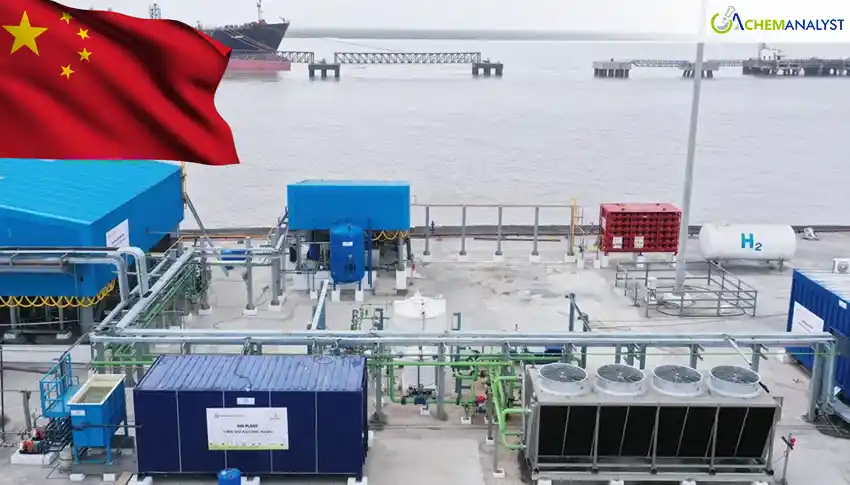Welcome To ChemAnalyst

The initiative aims to prove the viability of large-scale hydrogen generation by integrating a 100% hydrogen-fired turbine with substantial renewable energy sources and on-site storage.
China is moving closer to its goal of becoming a global leader in clean energy with the construction of a groundbreaking hydrogen power system in the Otoke High-Tech Industrial Development Zone in Ordos, northern China. The project, which is part of the Ejingke wind-solar-hydrogen integrated green ammonia project, is set to become the world’s largest of its kind, featuring a 30MW turbine that will run exclusively on hydrogen.
This initiative is a joint venture between Mingyang Hydrogen, a subsidiary of Mingyang Smart Energy, and Shenzhen Energy. It represents a significant step forward in the integration of renewable energy and hydrogen technology. While other companies like Japan’s Kawasaki Heavy Industries and Siemeins have previously demonstrated 100% hydrogen turbines, this Chinese project is the first to directly link a turbine of this scale with large-scale renewables and on-site storage, creating a comprehensive "electricity–hydrogen–electricity" closed-loop system.
The core of the system is designed to address the inherent intermittency of renewable energy sources like wind and solar. During periods of high renewable output, surplus electricity will be used to produce hydrogen through electrolysis. This hydrogen will then be stored in a series of twelve 1,875 m³ spherical storage tanks. When renewable output is low, the stored hydrogen will be used to generate electricity, ensuring a stable and reliable power supply.
The sheer scale of the project is remarkable. It includes a massive 500MW upstream wind capacity and a 5MW off-grid photovoltaic array. To facilitate the conversion of electricity to hydrogen, the facility will be equipped with 240MW of electrolysers, capable of producing approximately 4.3 tonnes of hydrogen per hour. In addition to power generation and storage, the complex will also feature a plant with the capacity to produce 150,000 tonnes of green ammonia annually, further demonstrating the versatile applications of green hydrogen.
Inner Mongolia’s ambition is to become a national hydrogen energy demonstration hub, and this project is a cornerstone of that plan. The region hopes the facility will serve as a global model for other nations looking to integrate hydrogen into their renewable-heavy grids. The success of this project could provide a blueprint for a future where hydrogen plays a pivotal role in stabilizing energy grids worldwide.
However, the project is not without its critics. Concerns have been raised about the potential for high energy costs due to the inherent energy losses associated with the processes of electrolysis, storage, and combustion. The efficiency of the entire cycle—from converting electricity to hydrogen and then back to electricity—will be closely monitored to determine the economic viability of such large-scale systems.
We use cookies to deliver the best possible experience on our website. To learn more, visit our Privacy Policy. By continuing to use this site or by closing this box, you consent to our use of cookies. More info.
